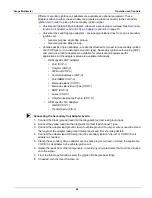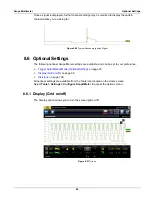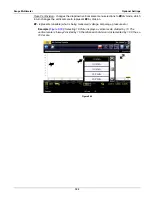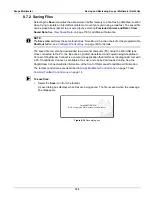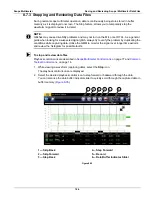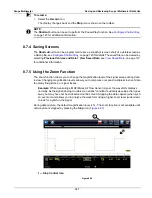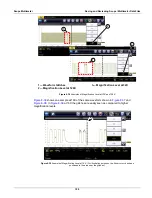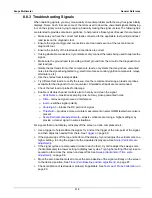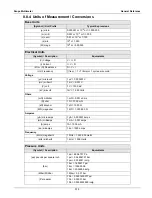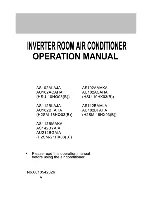
112
Scope Multimeter
General Reference
8.8.3 Troubleshooting Signals
When capturing signals, you may occasionally encounter problems with the way the signal initially
displays. Noise, hash, fuzz are some of the terms used to describe, unwanted signals displaying
in or on the signal you are trying to capture, basically making the signal unclear. The following tips
are intended to provide some basic guidance, to help resolve these types of issues if encountered.
•
Make sure you have the correct test leads connected to the applicable test point(s) and test
lead jacks on the diagnostic tool.
•
Ensure the signal and ground connections are clean and secure, at the test points and
diagnostic tool.
•
Ensure the polarity of the test leads connections are correct.
•
If using stackable connectors, try to isolate or only connect the leads being used to capture the
signal.
•
Make sure the ground lead is providing a direct ground from the circuit to the diagnostic tool
test lead jack.
•
Isolate the test leads from other components, leads, or systems that may induce unwanted
noise into the signal being tested (e.g. electric motors, secondary ignition components, relays,
alternators, etc.)
•
Use the shortest test leads possible.
•
Try different test leads, to verify the issue. Use the recommended snap-on leads or probes
available for the diagnostic tool or equivalent. Shielded test leads are recommended.
•
Check the test lead or probes for damage.
•
Enable or disable channel controls also to help try and clean the signal:
–
—maximizes sampling rate, but may pickup unwanted noise
–
—removes signal noise or interference
–
—switches signal polarity
–
—blocks the DC portion of signal
–
—provides a more accurate measurement on select GMM tests where noise is
present
–
Scale (Vertical scale adjustment)
—adjusts vertical scale. Using a higher setting may
provide a cleaner signal in some situations.
For signals that do not display or display off the screen, erratic, compressed etc.:
•
Use a trigger to help stabilize the signal. Try and set the trigger at the mid-point of the signal,
and then adjust as needed from there. See
•
If the signal wraps off the top and bottom of the display, try and readjust the vertical scale to a
higher setting, to bring the signal into the viewable display area. See
.
•
If the signal cycles are compressed (close to each other), try and readjust the sweep scale
(horizontal scale) to a lower setting to display less cycles. Try a higher setting if the cycles are
spread too far across the screen and seem flat. See
Sweep (Horizontal or Time scale
•
Move the zero baseline marker to move the zero baseline of the signal vertically on the screen
to the desired position. See
Trace (Zero Baseline position adjustment)
•
Check calibration of test leads or probe(s) if applicable. See

